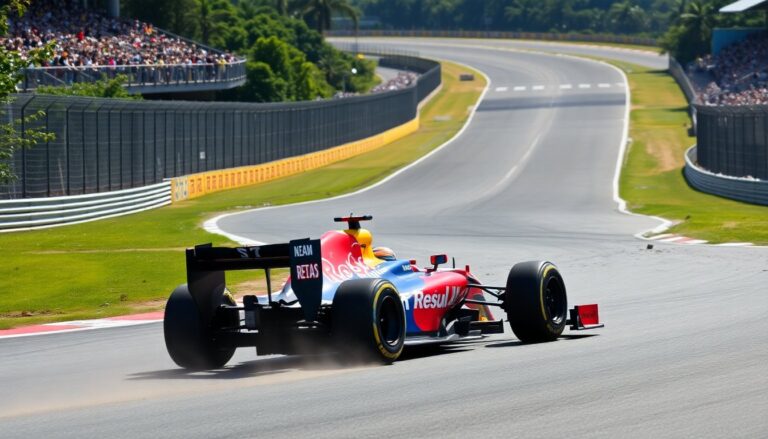Argomenti trattati
At the heart of every racing season lies the thrill of competition, yet it is the challenges that often define a driver’s career. For Gabriel Bortoleto, competing in his first home Grand Prix at Interlagos became a profound lesson in risk management. The young driver experienced a tumultuous weekend marked by two significant crashes, providing invaluable insights that extend beyond the racetrack.
The Brazilian Grand Prix weekend began with high hopes for Bortoleto, who had the home crowd rallying behind him. However, the excitement quickly turned to disappointment when he faced a catastrophic incident during the sprint race. The crash occurred on the last lap while vying for position, dramatically altering his weekend.
The sprint race incident
During the sprint race at Interlagos, Bortoleto engaged in a fierce battle with fellow racer Alex Albon. In an attempt to maneuver out of Albon’s slipstream, a critical miscalculation resulted in a violent collision. Bortoleto struck the inside wall at Turn 1 and was subsequently thrust back across the track, colliding with the barriers on the opposite side. The force of the impact was staggering, with sensors indicating he experienced a jarring 91G of acceleration during the crash.
Team’s response and challenges
Despite the serious nature of the accident, the Sauber team demonstrated resilience and determination. Following the crash, mechanics scrambled to repair Bortoleto’s car within a limited timeframe of just three hours before qualifying. Their efforts were commendable, yet ultimately, they were unable to ready the vehicle in time, forcing the rookie driver to start from the back of the grid.
In the aftermath of the incident, team principal Jonathan Wheatley emphasized the crucial role of safety protocols in modern racing, crediting the FIA for its commitment to driver protection. Fortunately, Bortoleto emerged from the crash unscathed, a testament to the stringent safety measures in place within the sport.
A lesson in risk management
Reflecting on the events of the weekend, Bortoleto acknowledged the necessity of understanding risks associated with racing. He remarked, “This has been a tough experience, but it’s taught me a lot about managing risks on the track.” The young driver recognized that while the adrenaline of competition can drive split-second decisions, it is imperative to weigh the potential consequences of those choices.
Looking forward
As the season progresses, Bortoleto is determined to apply the lessons learned from his home race to future competitions. He expressed his resolve to approach each race with a more calculated mindset, aiming to balance aggression with caution. The challenges faced at Interlagos will undoubtedly shape his development as a driver, instilling a deeper understanding of the sport’s complexities.
Despite the setbacks, Bortoleto remains optimistic about his journey in Formula 1. He noted that every experience, whether positive or negative, contributes to his growth both as a driver and an individual. The Brazilian Grand Prix may not have yielded the results he hoped for, but it reinforced his commitment to evolving within the highly competitive landscape of professional racing.
Gabriel Bortoleto’s experience at the Brazilian Grand Prix serves as a poignant reminder of the unpredictable nature of motorsport. The combination of high stakes and rapid decision-making can lead to unforeseen challenges. However, with each challenge comes an opportunity for growth, and Bortoleto is poised to embrace the lessons of resilience and risk management as he continues his journey in Formula 1.

